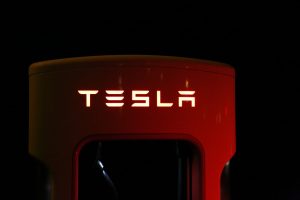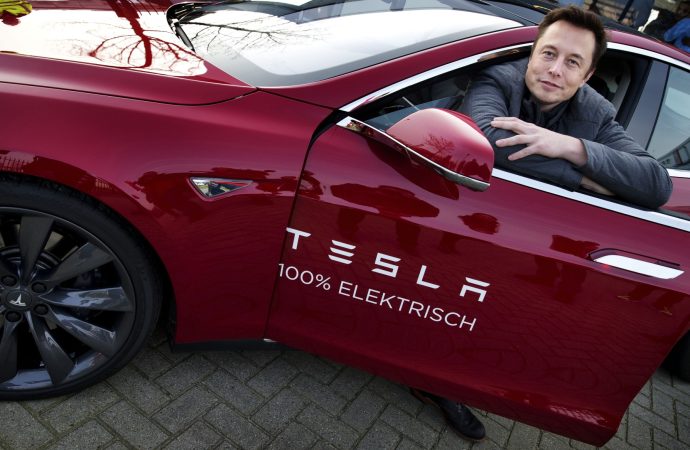Tesla, the pioneering electric vehicle manufacturer, has once again made headlines as shareholders approved CEO Elon Musk’s mammoth $56 billion pay deal and the company’s strategic move from California to Texas. This decision underscores significant shifts in corporate governance and operational strategy for Tesla. This article delves into the implications of these moves, examining the
Tesla, the pioneering electric vehicle manufacturer, has once again made headlines as shareholders approved CEO Elon Musk’s mammoth $56 billion pay deal and the company’s strategic move from California to Texas. This decision underscores significant shifts in corporate governance and operational strategy for Tesla. This article delves into the implications of these moves, examining the rationale behind them and their potential impact on Tesla’s future.
The $56 Billion Pay Deal: An Overview

This image is taken from google.com
Structure of the Pay Package
Elon Musk’s compensation package, worth an astounding $56 billion, is designed with performance-based incentives that align his rewards with Tesla’s market capitalization and operational milestones. Unlike traditional executive salaries, Musk’s package is entirely contingent on achieving specific performance targets. This approach is intended to motivate and ensure that Musk’s interests are directly tied to the company’s long-term success.
Shareholder Approval and Its Significance
Shareholders’ approval of this package signifies confidence in Musk’s leadership and vision. Despite the package’s enormous value, investors appear optimistic about Musk’s ability to drive Tesla to new heights. The approval process was likely influenced by Tesla’s remarkable growth trajectory under Musk’s leadership, which has seen the company transform from a niche electric vehicle maker to a global automotive powerhouse.
Analysis of the Pay Package
Performance Milestones
Musk’s compensation is linked to achieving a series of escalating performance milestones. These milestones include specific increases in Tesla’s market capitalization, as well as operational targets such as revenue and adjusted EBITDA (earnings before interest, taxes, depreciation, and amortization). Each milestone reached unlocks a tranche of stock options, further incentivizing Musk to achieve ambitious goals.
Potential Impacts on Company Performance
The structure of the pay deal encourages aggressive growth and operational excellence. By tying compensation to performance, Tesla ensures that Musk remains focused on driving innovation and expanding market share. However, this approach also raises questions about the sustainability of such rapid growth and the potential risks if key targets are not met.
Comparative Analysis of Executive Compensation
| Company | CEO | Total Compensation | Performance-Based | Market Capitalization |
|---|---|---|---|---|
| Tesla | Elon Musk | $56 billion | Yes | ~$800 billion |
| Apple | Tim Cook | $14.7 million | Yes | ~$2.3 trillion |
| Amazon | Andy Jassy | $212.7 million | Yes | ~$1.7 trillion |
| Microsoft | Satya Nadella | $44.3 million | Yes | ~$2.5 trillion |
| Alphabet | Sundar Pichai | $280.6 million | Yes | ~$1.5 trillion |
This comparative table highlights the uniqueness of Musk’s compensation package, particularly in terms of its sheer size and the strong emphasis on performance-based incentives. While other tech giants also tie executive compensation to performance, none match the scale of Musk’s potential earnings.
Tesla’s Move to Texas: Strategic Rationale
Reasons for the Relocation
The decision to move Tesla’s headquarters from Palo Alto, California, to Austin, Texas, is driven by several factors. Texas offers a more business-friendly environment, characterized by lower taxes and a more flexible regulatory framework. Additionally, the cost of living and operational costs are significantly lower in Texas compared to California, making it an attractive option for both the company and its employees.
Potential Benefits
Relocating to Texas allows Tesla to benefit from a more favorable economic environment, which can facilitate further expansion and innovation. Texas is also a growing hub for technology and manufacturing, providing Tesla with access to a skilled workforce and potential synergies with other tech companies.
Challenges and Considerations
However, the move is not without its challenges. Tesla will need to manage the logistics of relocating its headquarters and possibly a significant portion of its workforce. Additionally, maintaining company culture and cohesion during the transition could pose difficulties. There may also be political and social implications, as California and Texas have markedly different regulatory and social environments.
Comparative Table of Corporate Headquarters Moves
| Company | From | To | Reasons for Move | Impact |
|---|---|---|---|---|
| Tesla | California | Texas | Lower taxes, business-friendly environment, lower costs | Potential growth, cost savings, operational efficiency |
| Oracle | California | Texas | Similar reasons as Tesla | Improved financial performance, expansion potential |
| Hewlett Packard | California | Texas | Lower operational costs, tax benefits | Enhanced profitability, better business climate |
| Palantir | California | Colorado | Political and business climate, cost of living | Strategic expansion, access to new talent pool |
| Charles Schwab | California | Texas | Tax benefits, operational cost savings | Streamlined operations, financial advantages |
This table illustrates a broader trend of major corporations relocating their headquarters from California to more business-friendly states like Texas. The motivations often include financial benefits, regulatory ease, and operational efficiency.
Implications for Tesla’s Future
Market and Financial Performance
Both the approval of Musk’s pay package and the move to Texas have significant implications for Tesla’s market and financial performance. The pay deal is expected to drive aggressive growth strategies, while the relocation could result in substantial cost savings and operational efficiencies. Together, these moves position Tesla to capitalize on new opportunities and maintain its competitive edge in the rapidly evolving electric vehicle market.
Innovation and Expansion
Tesla’s continued focus on innovation will likely be bolstered by these strategic decisions. The financial incentives tied to Musk’s compensation will push for groundbreaking advancements in automotive technology, energy solutions, and beyond. Meanwhile, the Texas move provides a conducive environment for expansion, potentially facilitating new production facilities and research centers.
Workforce and Culture
Managing the transition to Texas will be crucial for maintaining Tesla’s unique corporate culture and retaining talent. While the move offers many advantages, ensuring that employees are supported during the transition and preserving the innovative spirit that defines Tesla will be essential. This may involve creating new initiatives to foster community and collaboration within the new headquarters.
Conclusion
The approval of Elon Musk’s $56 billion pay deal and Tesla’s relocation to Texas are pivotal moments in the company’s history. These decisions reflect a broader strategy aimed at sustaining rapid growth, driving innovation, and optimizing operational efficiency. While there are challenges to navigate, the potential benefits position Tesla for continued success in the competitive electric vehicle market. As Tesla embarks on this new chapter, the industry will be watching closely to see how these strategic moves influence the company’s trajectory and the broader automotive landscape.






















